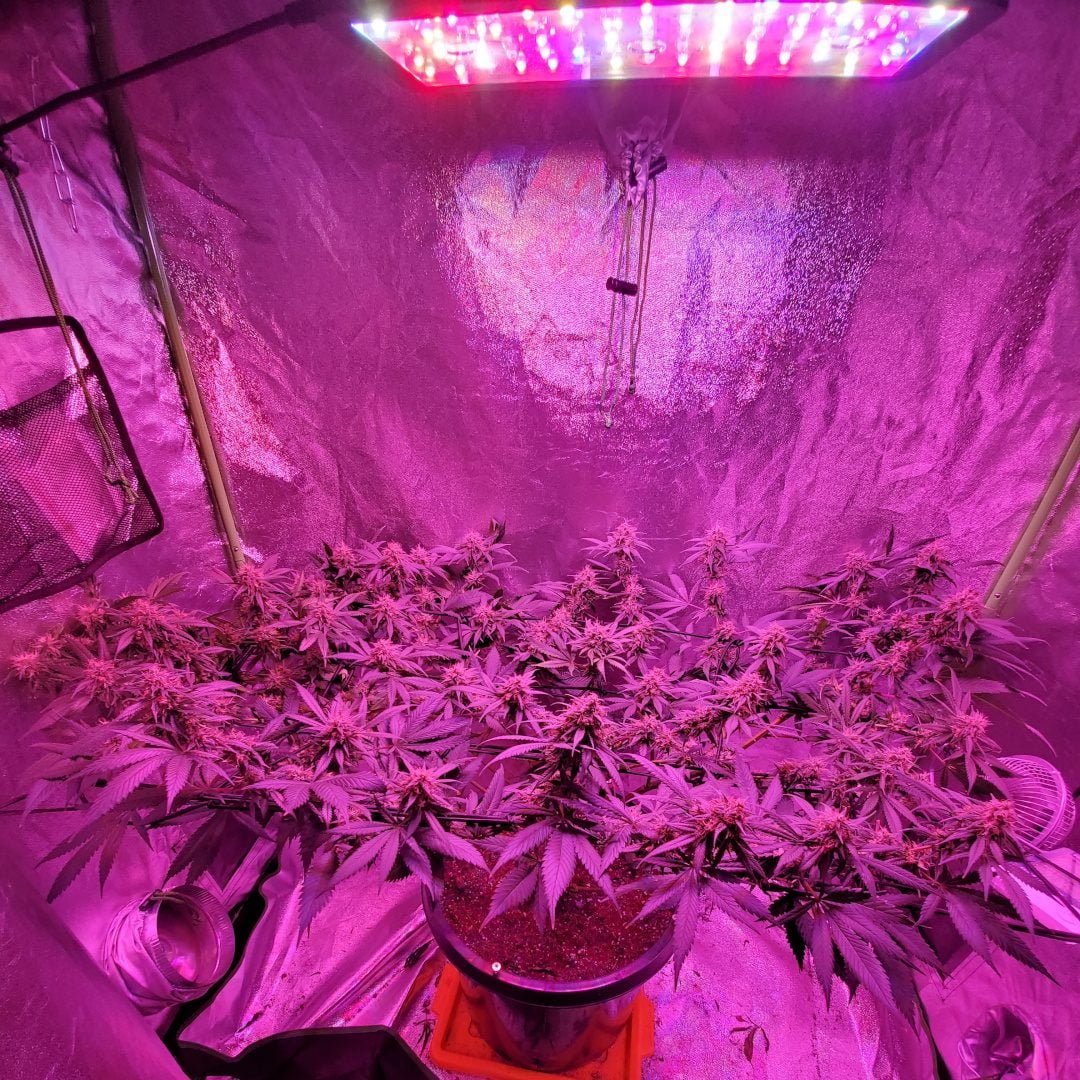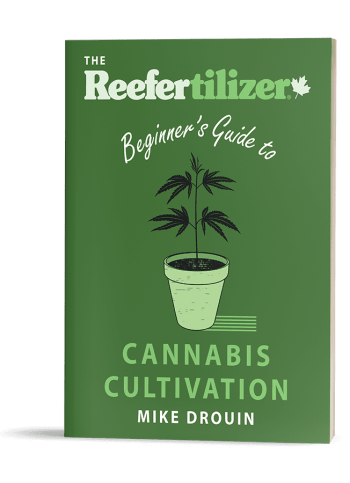Understanding the light cycle for weed is crucial for optimizing plant health and yield. The right balance of light and darkness directly influences the growth stages of cannabis, from seedlings to flowering. Utilizing a controlled environment, growers can implement specific light schedules that facilitate the transition between these stages, paving the way for successful cultivation. This introduction will shed light on the significance of precise light cycles and their impact on cannabis production.
The Science Behind Light and Dark
All cannabis plants contain receptors for Phytochrome far-red and Phytochrome red wavelengths of light. When cannabis plants are exposed to prolonged periods of darkness the lack of Phytochrome far-red light triggers the plants to switch to flowering and the utilization of Phytochrome red light.
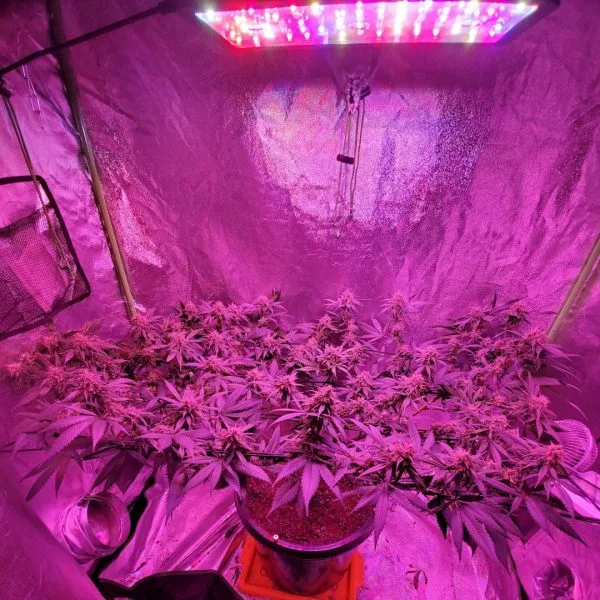
Plants require complete darkness for this transition to take place as the switch to the utilization of Phytochrome red light is slow. If the plants are exposed to any amount of light during this transition the plants will immediately revert back to the vegetative cycle.
That is why it is critical to give flowering cannabis plants 12 hours of uninterrupted darkness.
The darkness not only triggers flowering but it enhances trichome production.
Dark Cycles for Growing Cannabis
Just as important as watering your plant is the amount of light and darkness you allow your plant in order to thrive in the best growing environment.
The amount of darkness a cannabis plant requires is directly proportional to the phase of its growth cycle. For instance, cannabis in the flowering phase requires more darkness than during the vegetative growth phase.
Interestingly, the key to growing cannabis well is less about the light and more about the dark cycle.
It is much easier to control dark and light cycles when growing indoors although the amount of light and dark during the summer months is adequate for growing cannabis outdoors. Shorter days at the end of the summer trigger cannabis plants to begin flowering and redirect resources to the production of dense flowers.
Cannabis Seedling and Cutting Light Schedule
Seedlings and Cuttings are unique in that they require approximately sixteen (16) to eighteen (18) hours of light per day, however, this light should be diffused so that it is not too harsh. Once there are two to three nodes visible, plants can be placed in more direct light and are considered to be in the vegetative growth phase.
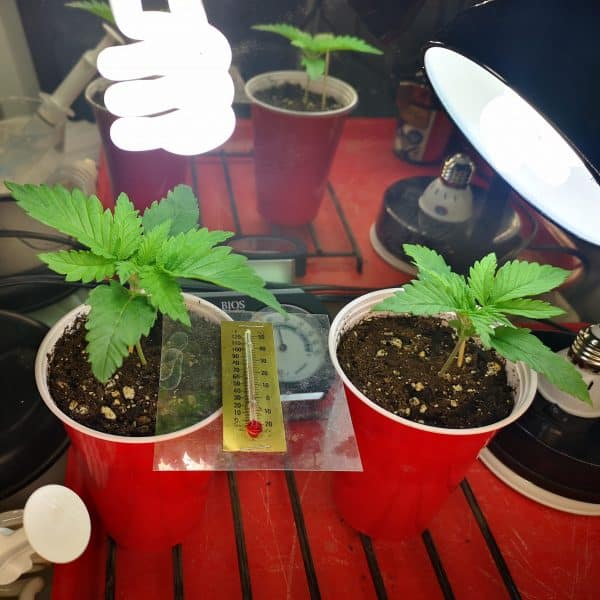
Best Light Cycle For Veg
Plants in the vegetative growth phase require 18 – 24 hours of light to ensure good Phytochrome far-red production. During this phase, plants develop a strong root system and stem as well as produce more foliage to be used for nutrient, water, and light uptake. The leaves of the plant utilize the sun to create sugars, through a process called photosynthesis, and these sugars are used to feed the plant.
Blue spectrum light is also the most beneficial wavelength of light during the vegetative phase. Growers who use metal halide lights will notice that the light appears bluish and is brighter than high-pressure sodium light, which contains more red wavelengths. Sunlight provides full-spectrum light, which includes high concentrations of blue light.
It is possible to give plants in the vegetative state 24 hours of light, with no dark period, to speed up the growth process. Some growers prefer constant light, whereas others prefer to give their plants some “rest” or dark time. Giving plants 18 hours of light, and six hours of dark cuts down on electricity usage and associated costs.
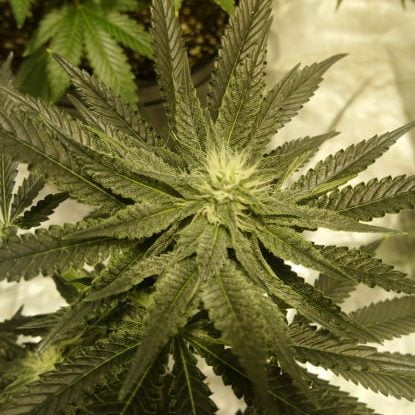
Flowering Growth Phase
Plants in the flowering growth stage require 12 hours of darkness and 12 hours of light to produce flowers. The dark stage is critical to keeping plants flowering and should not be interrupted. For plants grown indoors, it is easy to control the dark and light cycle with the use of a light timer. Timers can be set to automatically turn the lights on and off. When plants are grown outdoors the flowering phase will be triggered when days become shorter and fall approaches.
The flowering phase lasts anywhere from 8-12 weeks depending on the strain of cannabis being grown. Sativa strains generally take longer to flower and require harvesting in the late fall if grown outdoors.
Flowering is the period in which plants redirect water and nutrients away from the growth of the plant, and the leaves, and put the resources towards developing dense flowers.
Lights Matter
If cannabis is being grown outdoors the sun does the work. Sunlight is full-spectrum and gives the cannabis plants everything they need to grow and flower. If plants are being grown indoors the right type of lights are required for each phase. Plants in the vegetative state require High Intensity Distribution (HID) metal halide lights, which produce more of the blue light spectrum, and HID high-pressure sodium lights for flowering which disperses more red light wavelengths.
Growers may also choose to utilize LED light systems, which incorporate both blue and red wavelengths of light into one unit. LED light units have a switch that can be turned on during different phases of growth to tailor the wavelengths of light to the phase of growth.
Don’t Forget the Dark
Regardless of the light source used for growing cannabis, plants require 12 hours of complete darkness for flowering. During this period darkness becomes more critical to the plant than light.
Even for the experienced grower darkness is key in growing quality cannabis and should remain uninterrupted.
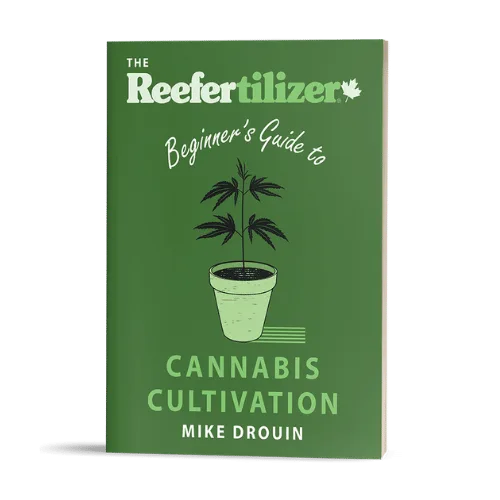
If you want to learn even more about growing good cannabis, we offer a free 40+ page guide full of images. Now available on Amazon.
Sign up for our newsletter and download the digital copy today!
This guide will answer many questions about growing cannabis, like the following…
Selecting Seeds
Identify and Correct Problems
Maximize Yield
Much More…
Get a Chance to INSTANTLY WIN a Reefertilizer Nutrient Kit When You Sign Up.


